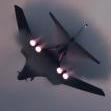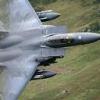Things haven't changed much since the late 50's. Where would the Air Force get the positions from if they ever go back to the WO program?
Historical USAF WO document (long); The In-Betweeners.
https://warrantofficerhistory.org/PDF/AFA_1191tween.pdf
Excerpt; In 1958, Congress created two new enlisted grades, E-8 and E-9. The rationale was that enlisted
members were reaching the top NCO grades midway in their careers and had no place to go from
there. The services did not want to use officer authorizations to make more warrant appointments,
so the solution seemed to be to add another tier to the enlisted ranks.
In 1959, the year that the Air Force promoted its first master sergeants to E-9, it also announced
plans to phase out its warrant officer program. At the time, officials insisted there was no
connection between the two moves, but the correlation is hard to ignore. The Air Force admitted
that it had decided that warrant officers constituted an unnecessary layer of supervision between
the commissioned and noncommissioned ranks. Some years later, officials concluded that the
new senior noncoms were "capable of doing the same jobs as warrant officers."
Unlike warrant officers, the new NCOs were charged against enlisted strengths, and the services
could afford more of them. The law allowed only three percent of all enlisted members to be in
grades E-8 and E-9, but that was more than four times the number of warrant officers the Air
Force had at the time.
Pentagon Foolishness;
The advent of the supergrade NCO was not without its problems. In its first burst of enthusiasm,
the Pentagon foolishly passed most of the new slots to major commands to fill as they saw fit.
Many went to deserving master sergeants regardless of their specialties or positions. Commands
again were using the appointments to reward individuals rather than to fill valid requirements. It
took USAF several years to regain control over the supergrade program, define the superintendent
slots, and begin to fill them by centralized promotions.
Meanwhile, the Air Force had to make use of those several thousand warrant officers who were
left in the system. Most were assigned to commissioned officer positions. The service encouraged
early retirement and, in some cases, forced attrition.

.thumb.jpg.9c390ca8e6e624c0547abd6a3f6885b5.jpg)




